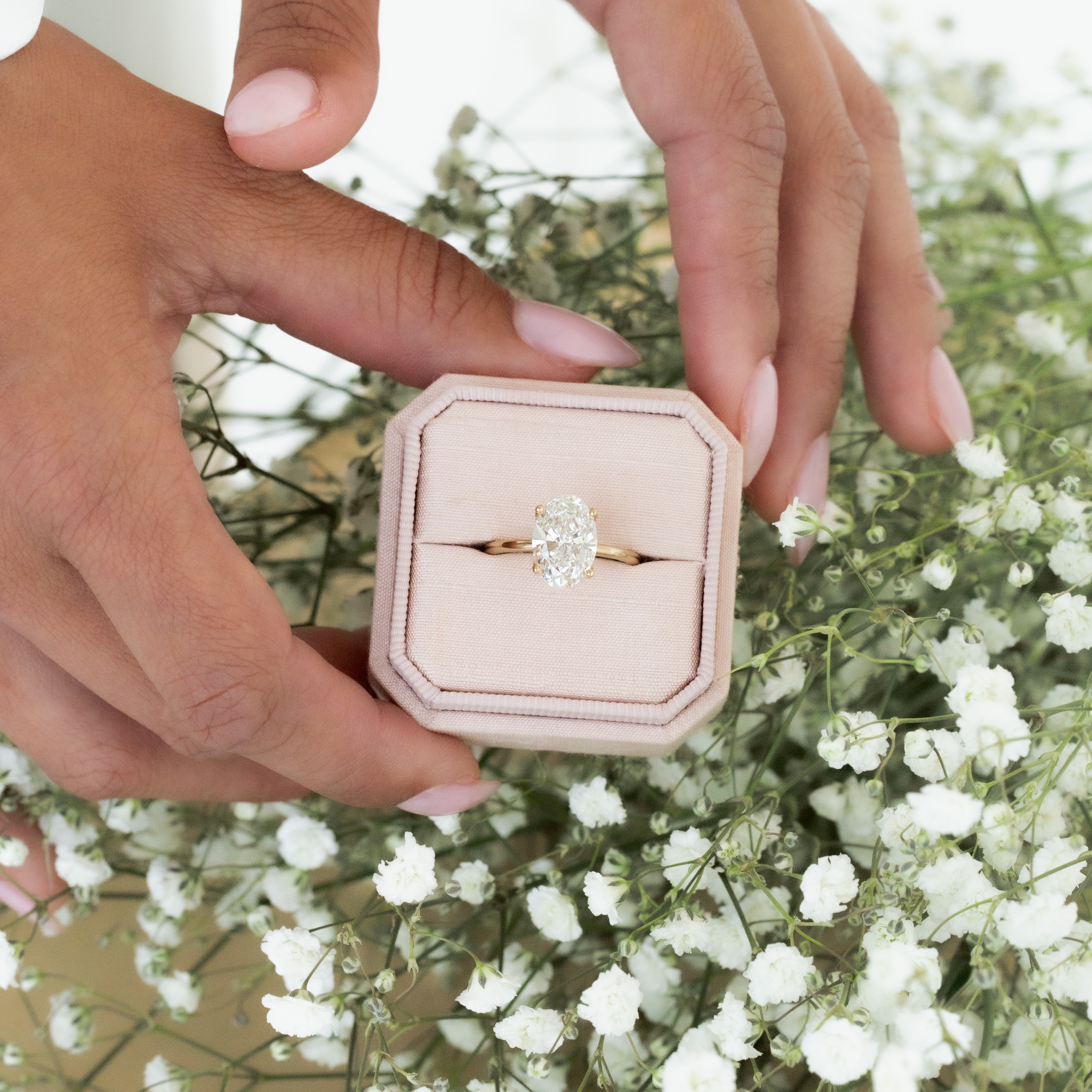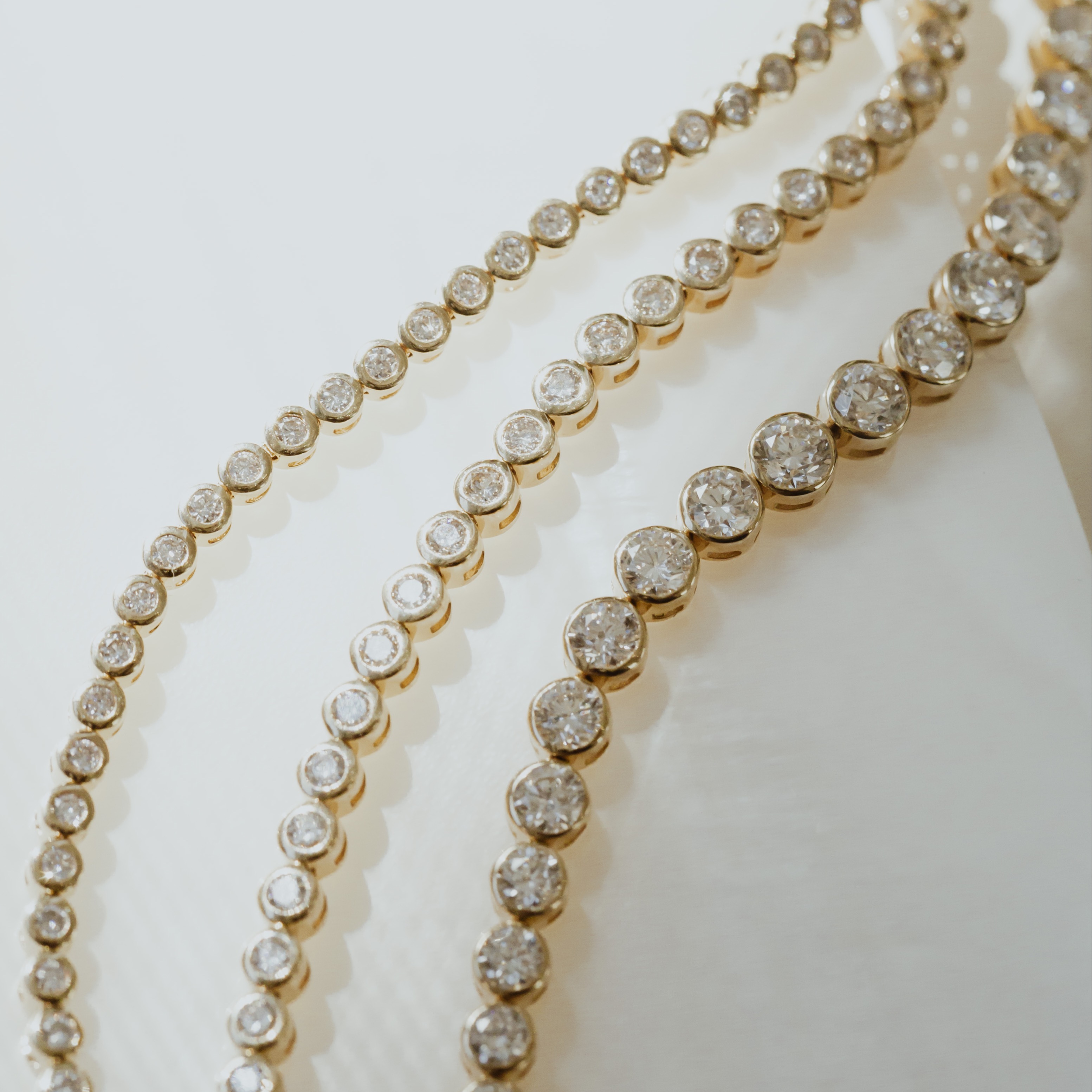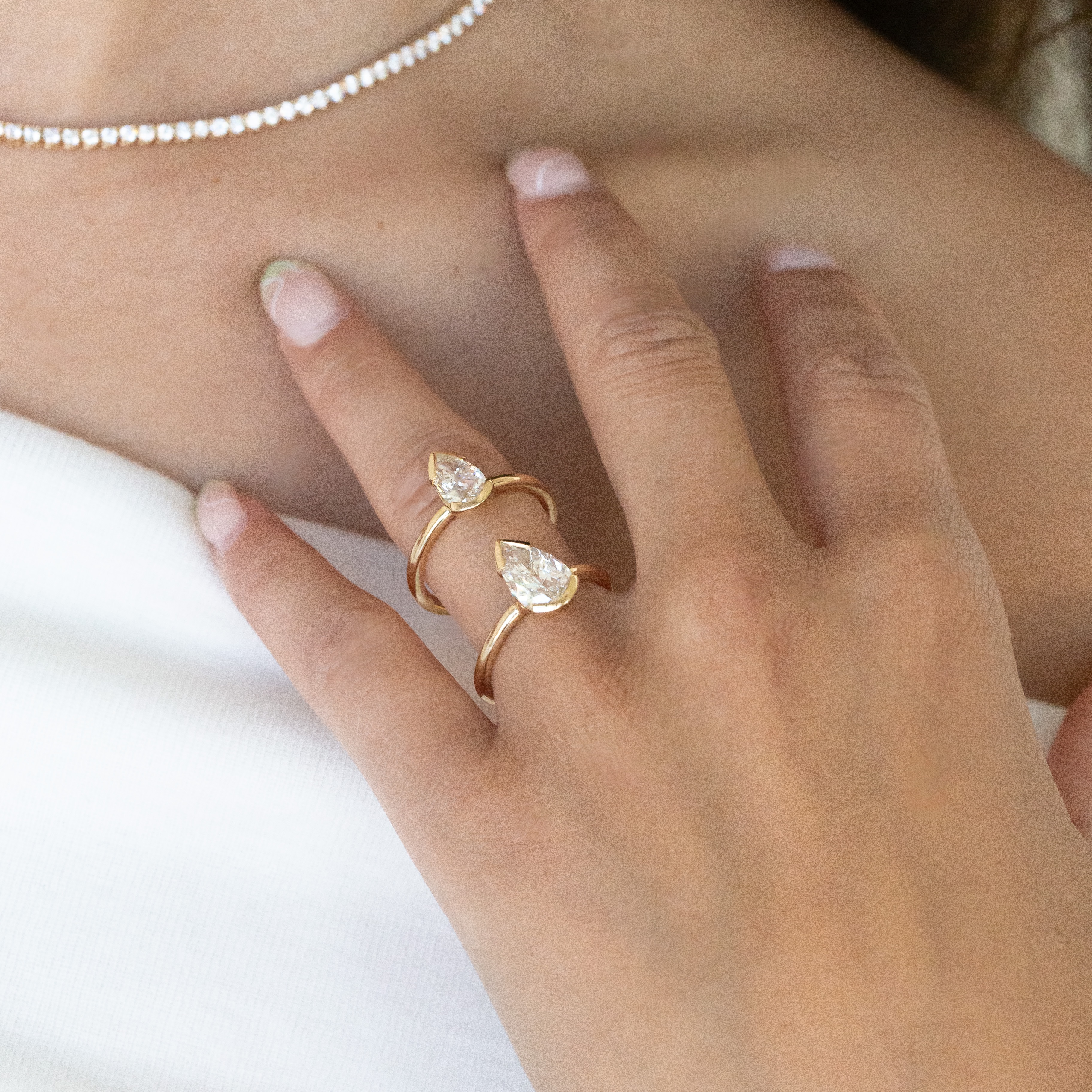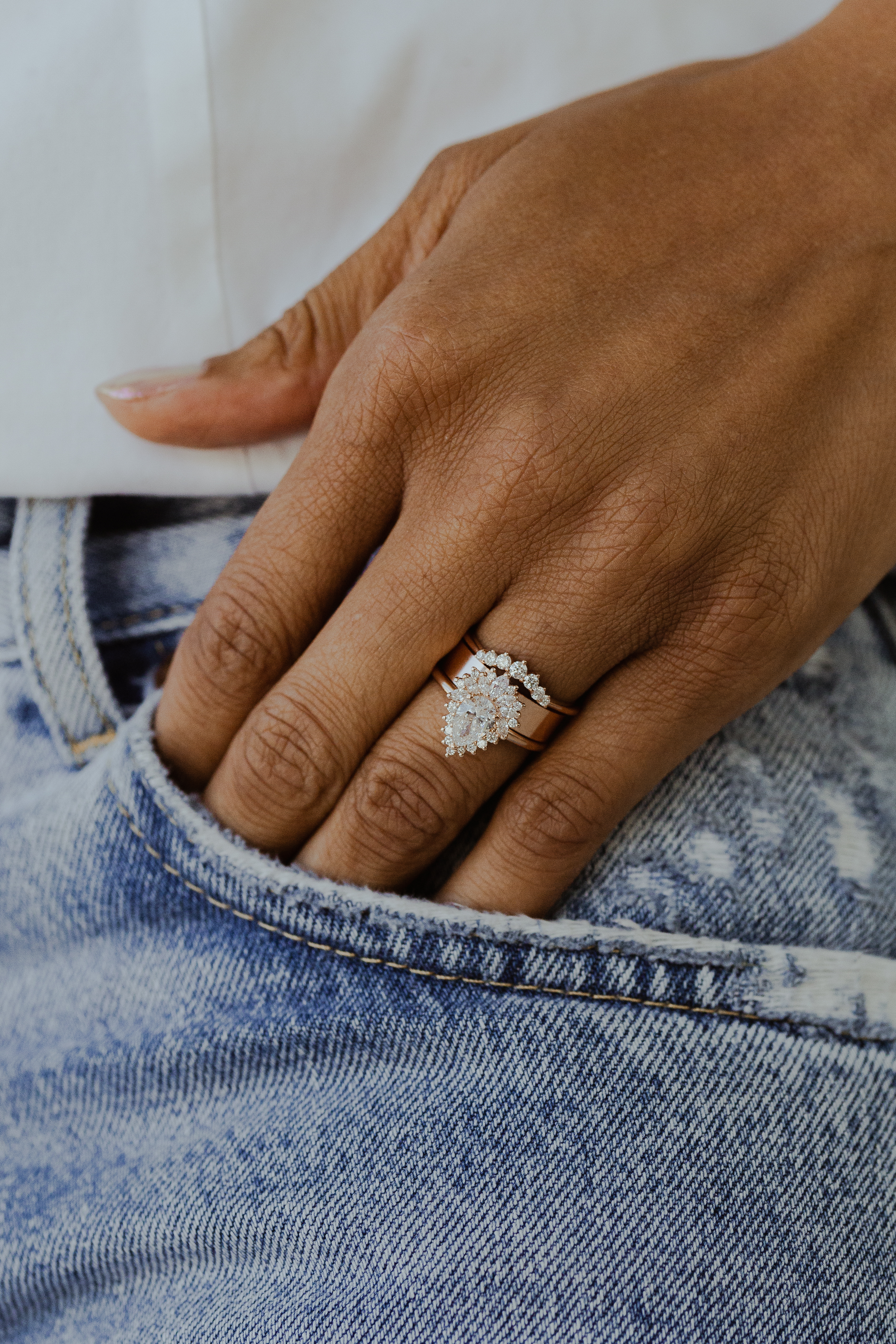How are Lab Grown Diamonds Made?

Lab-grown diamonds are made, as the name suggests, in a lab. They’re produced in a scientific, laboratory setting, using one of two main processes: CVD and HPHT diamond methods. Both simulate what happens in nature during diamond formation, resulting in a lab-grown or engineered diamond that shares identical chemical and physical propertieswith a natural stone—including cut, clarity, size, shape, and hardness.
Lab-grown diamonds are a popular alternative to naturally occurring diamonds and have become increasingly common. You’ll find them listed alongside mined diamonds in stores and online when shopping for engagement rings, diamond jewelry, and other fine pieces.
With so many shared characteristics, what’s the difference between lab-grown diamonds and natural diamonds? How exactly are they made? And how do you choose which one is right for you?
We go into the specifications of each type and what you may want to know when evaluating whether to buy one or not.

The Oval Maeve is available in both lab-grown and natural diamond options.
7 Key Differences Between Lab-Grown Diamonds & Natural Diamonds
When it comes to deciding what type of diamond is right for you, one of the main considerations is whether to go with a lab-grown or naturally formed diamond. Visually, the two are indistinguishable to the naked eye.
So what are the differences? And what should you consider when buying your next piece of diamond jewelry?
1 - Origin
Natural diamonds are formed over billions of years under high-pressure and high-temperature conditions deep within the Earth's mantle. Lab-grown diamonds, including both CVD diamonds and HPHT diamonds, are created in a controlled environment using diamond synthesis processes that mimic nature over a matter of weeks. Keep reading to learn more about the two main processes!
2 - Cost
Like natural diamonds, prices for lab-grown diamonds can vary depending on carat size, cut, clarity, and shape. Broadly speaking, engineered diamonds may cost less than their natural counterparts due to streamlined supply chains and the absence of large-scale mining. Still, they are influenced by the same market dynamics that affect the overall diamond market.
3 - Environmental Impact
Lab-grown diamonds are considered a more environmentally conscious choice since they don't require mining. However, the creation process itself does involve energy use and resource consumption. On the other hand, mined diamond industry standards—like the Kimberley Process—aim to ensure ethical and environmentally mindful sourcing.
4 - Purity and Quality
Lab environments allow for greater control during diamond creation, often leading to fewer inclusions and higher clarity. These gem-quality diamonds can be tailored to meet very specific criteria. Natural diamonds, however, offer a wider range of unique characteristics developed through billions of years of growth deep within the earth.
5 - Traceability
Because lab-grown diamonds are made in specific facilities, tracing their origin is typically easier. In contrast, natural diamonds often pass through multiple hands, making sourcing and transparency more complex.
6 - Supply
Lab-grown diamonds can be produced based on market demand, making them more readily available. Their supply can scale more efficiently compared to the limited availability of traditional mined diamonds, which depends on natural resources and mining operations.
7 - Color and Type
Thanks to lab control, CVD diamonds and HPHT diamonds can be engineered to showcase specific colors or clarity levels. This makes it easier to create high-quality diamonds tailored to customer preferences. Natural stones, on the other hand, develop color and inclusions from the unique environment they formed in—adding to their rarity.
8 - Investment and Resale
Natural diamonds are generally considered a better long-term investment due to their rarity and established prestige in the luxury market. The resale value of lab-created diamonds is still evolving and depends on changing market trends and consumer perception.
9 - Certification and Grading
Both lab-grown and natural diamonds are certified and graded by leading labs such as the Gemological Institute of America (GIA). Reports specify origin and include data on diamond grading, carat, clarity, and color.
10 - Rarity
Natural diamonds are considered rarer and are deeply tied to tradition and symbolism. While lab-grown diamonds are real, durable, and brilliant, they don’t have the same cultural perception of rarity or timelessness that genuine diamondsformed deep in the earth hold.
Benefits of Buying a Lab-Grown Diamond
If you’re looking for a diamond that can be tailored to your specific needs—whether for an engagement ring or another meaningful piece of jewelry—lab-grown diamonds are a great option. The controlled growth process allows you to select clarity, diamond shape, color, and carat weight with more flexibility.
Other benefits include:
- Lower cost
- Environmentally conscious option
- Easier to source ethically
- Consistent diamond quality
- Customization potential
- Wider availability in the market

The bezel-set tennis bracelet is also available in lab-grown options.
2 Main Methods for Growing Lab Diamonds
There are two primary methods used to create lab-grown diamonds: HPHT (High Pressure High Temperature) and CVD (Chemical Vapor Deposition). Both replicate the natural growth process of diamonds but vary in equipment, time, and outcome.
Method #1 - High Pressure High Temperature (HPHT)
This process mimics the Earth’s natural diamond-forming environment. A single crystal diamond seed is placed in carbon, then exposed to temperatures over 1,400°C and pressure around 5 GPa. The carbon forms around the seed, resulting in a diamond that is then cut and polished.
Advantages: Quicker growth, accessible pricing, useful for both jewelry and industrial applications, and capable of producing stones with unique colors.
Method #2 - Chemical Vapor Deposition (CVD)
In this method, a diamond seed is placed in a vacuum chamber, heated to 800°C, and exposed to carbon-rich gas. The gas is ionized, and the carbon atoms bond to the seed, forming a new diamond layer by layer. This method offers more control over impurities and clarity.
Advantages: Produces larger, clearer stones with excellent chemical composition and consistency—perfect for premium designs.

The Zadie Pear looks great with lab-grown or natural diamonds.
Other FAQs about Lab-Grown Diamonds
Are lab-grown diamonds real diamonds?
Yes! A lot of people ask this question and need to learn exactly how lab-grown diamonds are made. But the answer is simple. A lab-grown diamonds start from a small trace amount of natural diamond material and are grown in a lab to a bigger size with specific characteristics (that can be influenced by the introduction of other gasses, pressures, etc. during the process). But it’s the same carbon makeup as a real diamond.
Think about it like a mushroom found in the woods versus a mushroom grown in a greenhouse. Both are mushrooms, one has been helped to grow, from a spore (similar to a seed), and the other was found naturally in its habitat.
Can a jeweler tell if a diamond is lab-created?
Yes! But only with specialized equipment like a spectrometer. Often, lab-grown diamonds have laser-inscribed identifiers and specific crystal patterns that form during the lab processes that are visible under magnification.
What are the disadvantages of lab-grown diamonds?
Resale value, perception and prestige, limited sizes and colors, and market saturation are the four biggest areas of concern for lab-grown diamond skeptics. While there is evidence to debunk most of these, there is no getting around the fact that the history of natural stones is far longer than the recent boom of man-made diamonds.
Will lab-grown diamonds hold their value?
While it is impossible to say what lab-grown diamonds will be worth in the future, it is important to know that the market for lab-grown diamonds is stable. The demand for lab-grown diamonds continues to increase, for many of the positive economic and ethical benefits we’ve outlined.
What is a diamond seed made out of?
A diamond seed, used at the beginning of the lab-grown diamond-making process, is a crushed powder made of diamond material, 99% carbon, and some nitrogen. It’s the small amounts of the elements present in natural diamonds.
Check out our FAQs page for all the other answers to your questions. Plus, to get more information on different types of stones, gems, and jewelry types, visit the Sarah O. blog!


Classic. Brilliant. Timeless. Designed to celebrate your forever with elegance that never fades.